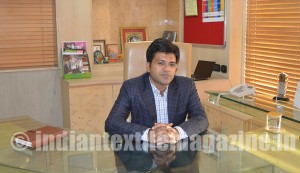Citing its outstanding performance, Mr. Deepak Chiripal, CEO, Nandan Denim Ltd., said in a statement: “Our company has successfully completed its capacity expansion plan. Post expansion, Nandan Denim has become India’s largest denim fabric manufacturer with an installed capacity of 110 million meters per annum. The spinning capacity is increased to 141 tons per day and, in addition, the company has created yarn dyed shirting capacity of 10 MMPA. We expect to get the full realisation and synergies of the expansion plans in the next financial year”.

Nandan Denim is a part of a leading conglomerate, the Chiripal Group, which was established in 1972 and is currently diversified across several businesses like Textiles, Chemicals, Packaging, Infrastructure and Education.
Nandan Denim commenced its operations in 1994 with textile trading business and forayed into textile manufacturing in 2004. The company has established fully integrated facilities for manufacturing a range of products like woven fabrics, circular knitted fabrics, polar fleece fabrics, cotton hosiery, denim, etc.
With one of the largest denim fabric manufacturing capacities in the world, the company expanded its denim fabric capacity from 71 MMPA to 110 MMPA. It has completed backward integration by expanding its spinning capacity from 54 TPD to 141 TPD, which will result into higher operating margins. The company also owns a captive power plant of 15 MW. Its consolidated revenue was Rs. 1,220 crores.
Nandan Denim has invested in state-of-art machinery with latest technology from Germany and Japan, capable of producing a wide range of denim fabrics. The company which has garnered a domestic marketshare of 10 per cent exports its denim fabrics to over 28 countries across the globe through its strong global dealer-distributor network.
Nandan Denim’s rationale behind capacity expansion and integration was the strong domestic demand backed by a comparatively young population (78% < 45 years), rising disposable incomes and fashion consciousness and increasing organized retail industry penetration in Tier-II and III cities.
The company also expects strong demand and potential for being a global production hub driven by easy availability of cotton, competitive currency and low-cost labour.
Also India is expected to benefit from China’s decreasing competitiveness. As per CITI estimates, if China loses 10 per cent marketshare in global textiles, India’s market share will increase by 80 per cent.